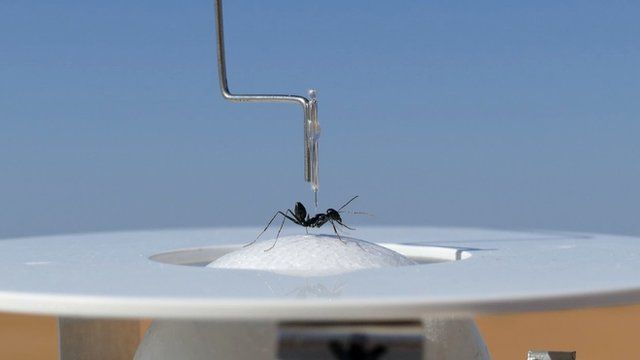In the world of biology, there are many different things we have yet to understand. Ants, for example, are one of the most ingenious species on the planet. Researchers have been baffled by how these insects find their way back to the nest and how this can be replicated. It appears using a tiny treadmill for ants solved a large part of the mystery.
Tiny Treadmill Results in Great Understanding
For those people who are unaware, ants often find their way back to the nest by using the sun as a navigational tool. Moreover, they also memorize the number of steps they have taken since leaving the nest. Whenever possible, ants will try to follow a direct path back to their home as a way to be more productive. Researchers have now developed tiny treadmills for ants to study their behavior more closely.
Creating a tiny treadmill to accommodate ants was not an easy feat, to say the least. Scientists relied on a Styrofoam ball and held the ants upright with dental floss. It sounds rather barbaric, but it doesn’t appear to be harming the ants in question. The construction of such a treadmill was planned well in advance, as the same method was used to figure out how other animals walk or run.
Desert ants are of great interest to scientists, as they have been for several decades. The unusual treadmill contraption has provided them with a lot of valuable insight. For example, we now know how desert ants find their way back to the nest. A mix of counting steps and using the sun for navigational purposes puts them on the mark nearly every single time. Unfortunately, ants can also get “lost,” which is something no scientists had considered up until this point.
What is rather remarkable is how the scientists had to effectively “tether” the ants to Styrofoam ball. Dental floss proves to be a great ally in this regard, as it seems to do the job just fine. One would somewhat expect ants to remain upright while walking over a slowly rotating ball, but that does not appear to be the case. Additionally, this contraption allowed the researchers to successfully record every movement made by the desert ant in question.
Plenty of people will be surprised to learn ants shared walking gaits and a change of walking pace with their human counterparts. It is rather odd to think of ants as having a gait, but that is evidently the case. Knowing ants are conscious about the number of steps they take to find their way back to the nest is quite fascinating as well, to say the least. Using the sun for orientation is how our ancestors traveled as well, which is rather remarkable.
Ants also have a “search mode” which is triggered one they realize they can’t get back to their nest in a straight line. As a result, they start to move around in loops until they pick up the orientation again. Because the Styrofoam ball changes directions in accordance with the ants’ movements, a lot of valuable data was recorded by the researchers.
If you liked this article, follow us on Twitter @themerklenews and make sure to subscribe to our newsletter to receive the latest bitcoin, cryptocurrency, and technology news.
Image Source: BBC

